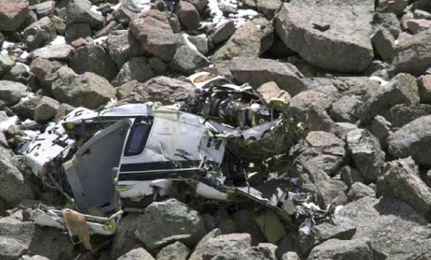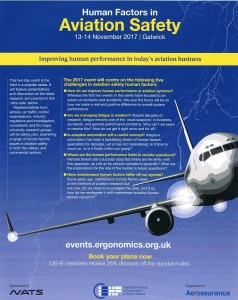
- NTSB’s Christopher Hart Visiting the NMSP (Credit: NTSB)
NTSB: “Going Above and Beyond in Helicopter Safety”
Christopher Hart, Acting Chairman of the United States National Transportation Safety Board (NTSB), has published an article on a recent visit to the New Mexico State Police (NMSP). In 2009 the NMSP’s Special Operation Aircraft Section lost A109E N606SP in a fatal accident taking off from a remote, mountainous landing site in dark (moonless) night, windy, instrument meteorological conditions (IMC) during a search and rescue (SAR) mission.

The accident site (Credit: NTSB)
The NTSB report noted that:
Contributing to the accident were an organizational culture that prioritized mission execution over aviation safety and the pilot’s fatigue, self-induced pressure to conduct the flight, and situational stress. Also contributing to the accident were deficiencies in the NMSP aviation section’s safety-related policies, including lack of a requirement for a risk assessment at any point during the mission; inadequate pilot staffing; lack of an effective fatigue management program for pilots; and inadequate procedures and equipment to ensure effective communication between airborne and ground personnel during search and rescue missions.
The safety issues discussed in this report include the pilot’s decision-making, flight and duty times and rest periods, NMSP staffing, safety management system programs and risk assessments, communications between the NMSP pilots and volunteer search and rescue organization personnel, instrument flying, and flight-following equipment.
The Aircraft Owners and Pilots Association (AOPA) have produced an excellent video on this accident:
Clearly this was an accident investigation that looked deeply at systemic organisational issues and touched on some of the major risk management issues that are relevant to all SAR, HEMS (Helicopter Emergency Medical Service) and similar missions.
After the accident NTSB directed three recommendations to the Governor of the State of New Mexico:
- Require the New Mexico Department of Public Safety to bring its aviation section policies and operations into conformance with industry standards, such as those established by the Airborne Law Enforcement Association. (A-11-53)
- Require the New Mexico Department of Public Safety to develop and implement a comprehensive fatigue management program for the New Mexico State Police (NMSP) aviation section pilots that, at a minimum, requires NMSP to provide its pilots with protected rest periods and defines pilot rest (in a manner consistent with 14 Code of Federal Regulations Section 91.1057) and ensures adequate pilot staffing levels and aircraft hours of availability consistent with the pilot rest requirements. (A-11-54)
- Revise or reinforce New Mexico State Police (NMSP) search and rescue (SAR) policies to ensure direct communication between NMSP aviation units and SAR ground teams and field personnel during a SAR mission. (A-11-55)
In his article, Hart explains that the unit went further and also pursued:
- personal locater beacons for each crew member,
- Spider Tracks upgrade,
- Garmin Pilot Pro used with iPad,
- flight vests with signaling devices and survival gear,
- environmental equipment upgrade,
- survival kits,
- enhanced flight following with New Mexico State Police districts,
- flight supervision/coordination between commanders,
- terrain avoidance upgrade,
- ALEA and other formal safety training,
- enhanced mission planning and detailed mission briefing,
- new risk management procedures,
- crew endurance/management,
- an aviation safety training program,
- aircraft section standard operating procedures,
- tactical flight officer program, and
- improved coordination with ground assets.
Hart concludes:
After an accident, a strong response like the New Mexico State Police’s helps to prevent a recurrence. And by learning from the robust measures that the New Mexico State Police has put in place, others can hope to avoid another tragic loss.
Safety is more than showing up or speaking up. It is also about taking steps that may save a life before a fatality happens. If you work in a helicopter operation, how is your safety culture? What improvements can you make?
Christopher Hart’s article is here: http://safetycompass.wordpress.com/2014/06/09/going-above-and-beyond-in-helicopter-safety/
UPDATE 5 November 2014: NTSB held a board meeting on a loss of control accident in 2013 to an Alaskan State Trooper AS350B3 N911AA engaged in a SAR mission. NTSB made a number of findings and recommendations on culture, safety management and risk.
UPDATE 30 March 2015: See also this NTSB article: Public Helicopter Operations: Act Before an Accident
Aerossurance sponsored the 2017 European Society of Air Safety Investigators (ESASI) 8th Regional Seminar in Ljubljana, Slovenia on 19 and 20 April 2017. ESASI is the European chapter of the International Society of Air Safety Investigators (ISASI).
Aerossurance sponsored an RAeS HFG:E conference at Cranfield University on 9 May 2017, on the topic of Staying Alert: Managing Fatigue in Maintenance.
Aerossurance is pleased to be supporting the annual Chartered Institute of Ergonomics & Human Factors’ (CIEHF) Human Factors in Aviation Safety Conference for the third year running. We will be presenting for the second year running too. This year the conference takes place 13 to 14 November 2017 at the Hilton London Gatwick Airport, UK with the theme: How do we improve human performance in today’s aviation business?

Aerossurance has extensive air safety, operations, airworthiness, human factors, aviation regulation and safety analysis experience. For practical aviation advice you can trust, contact us at: enquiries@aerossurance.com
Follow us on LinkedIn and on Twitter @Aerossurance for our latest updates.

Recent Comments